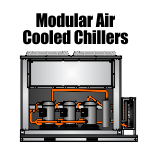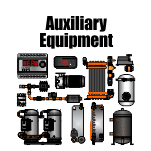Dairy Chillers
WPI provides the dairy industry with closed loop milk cooling systems. Modular, packaged, split, glycol, portable, and custom chillers are just to name a few variations of equipment WPI can produce for your Milk Processing Plant.

Application Description:
Maintaining milk at a cool temperature preserves it. When windmills and well pumps were invented, one of its first uses on the farm besides providing water for animals was for cooling milk, to extend the storage life before being transported to the town market. The naturally cold underground water would be continuously pumped into a tub or other containers of milk set in the tub to cool after milking. This method of milk cooling was extremely popular before the arrival of electricity and refrigeration.
When refrigeration first arrived (the 19th century), the equipment was fairly small and did not have the ability to rapidly cool the large volume of milk that was entering the storage tank in a short period of time. This problem was resolved through the development of the ice bank. This is a double-walled tank design where water and cooling coils fill the space underneath and around the milk tank above.
All day long, the small compressor and cooling system slowly draws heat out of the water, while a second pump continuously circulates the water around the coils. Ice eventually builds up around the coils, until it reaches a thickness of about three inches surrounding each pipe, and the cooling system shuts off. When the milking operation starts only the milk agitator and the water circulation pump blowing water across the ice and the steel walls of the tank are needed to rapidly reduce the incoming milk to a temperature below 40 degrees. But because the ice is not permitted to build up until it touches the milk storage tank, the milk does not get cold enough to also freeze.

This cooling method worked well for smaller dairies up to about 40 cows, but for large numbers of animals a better system was needed to rapidly cool the incoming warm milk. This is usually done using a device known as a plate chiller, which is a heat exchanger. Alternating stainless steel plates cause the milk to flow in a thin sheet across the plates, while cold water is circulated in a thin sheet on the other side of the plates. Flattening out the milk flow permits quick. even cooling for all the milk, compared to a round tube where the center core does not cool as rapidly as the walls.
The plate chiller has high cooling demands, and for many farms this involves a step back into the past, back to the days of windmills and milk-can cooling, except now a large volume of naturally cold underground water is continuously streamed through the plate chiller to quickly bring the milk down to the temperature of the underground water at about 50 °F (10 °C). The water is usually not just dumped back into the ground again, but reused for washing and other purposes.
But the milk still is not as cold as it needs to be, so the milk storage tank is still used to do further cooling, to bring the milk down to 40 degrees. But with the development of high-power 3-phase electrical service, ice-bank chillers are typically no longer used. Instead the milk storage tank is a direct-cooling system with cooling coils embedded in the walls of the tank, that quickly pull the heat out and dump it across a large array of possibly several different high-horsepower compressors and condensing units. Once the milk has achieved 40 °F (4 °C) after milking is finished, only one or two cooling units need to run occasionally to maintain the correct temperature.
· Ice Bank Tank Systems For Milk Chilling · Cold Storage For Milk & Milk Products · Power Efficient Milk Chilling System
 Packaged Chillers Non-expandable (integrated pump tank) 1.5Ton – 20Ton Single / Dual Circuits Single / Dual Pumps |
 SAE Series Modular Chillers Expandable (pump & tank on separate skid) 1.5Ton – 200Ton Single / Dual Circuits |
 SAR Series Split Chillers Expandable (Outdoor Condensing Unit) (pump, tank, evaporator on indoor skid) 1.5Ton – 200Ton Single / Dual Circuits |


















